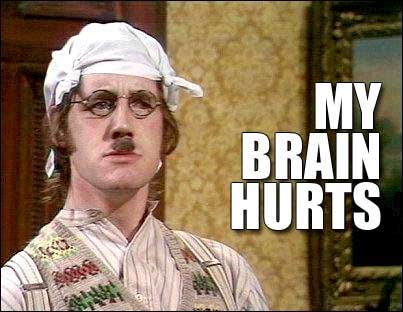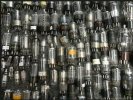For folks asking about op-amp rolling, I have done that twice:
I reviewed the Gustard H20 which is a high-end headphone amplifier yesterday. Its owner kindly sent me some high-end op-amps to "roll" in there to see what difference it makes. The task was pretty easy. The top screws come out of the H20 and if you tilt the unit, the lid falls out exposing...

www.audiosciencereview.com
This is a study of whether changing op-amps in a DAC makes a measurable difference. Taking a lead form "rolling" tubes in tube products, a trend has started in replacing op-amps -- sometimes with much difficulty -- to improve performance of solid state products like DACs. A few months ago I...

www.audiosciencereview.com
You have a problem with your methodology. You are applying a phenomena found in headphone amps, which have on average very low distortion levels from the start because there is less demand on the loads, to then extrapolate that behavior to all amps, including those pushing 100+ watts. This is a problem with grand statements, they are not always necessarily true.
Instead, can you run the experiment one more time, but this time using something that should have a more noticeable effect. Say, for example, trying it with a TPA3255 design. I propose this for an experiment:
Take either a 3eAudio EAUMT-0260-2-B (
http://www.3e-audio.com/amplifier-kits/tpa3255-2ch-260w/ ), which is based on the design from JLE, the Sylph-D200 (
https://www.jlelectronicsph.com/product/sylph-d200-tpa3255-pffb-stereo-ready-to-run-amplifier-module), or an even cheaper (or copied) design of this (like this on AliExpress:
https://www.aliexpress.com/item/1005003213211009.html?spm=a2g0o.cart.0.0.37013c00JIN0Kh&mp=1 ) and then swap the op amps. Do NOT use the JLE Sylph-D200, because that was the original designer of the line and they have really good, known performance.
Now, this can give you a couple pieces of content to put out: 1) chinese clones of the JLE Sylph-D200, how do they stack up, and what compromises harmed them and by how much, 2) does op-amp rolling help OUTSIDE OF HEADPHONE AMPLIFIERS, 3) does swapping op amps help with the third and fifth order harmonic distortion found in the Sylph (and if found it the other designs as well, does it help with those).
You writing something off flippantly with sparse data (meaning you have proven that in specific headphone amps, which already have decent performance and low noise, you get very little benefit, if any, and it mainly is flushing your money; but what you haven't proved is whether or not it helps with designs outside of headphone amps, whether or not it can help tame certain distortion found in some amps, which you did show it can swap second order distortion for third order or vice versa in one of your headphone amp tests, and how that might impact an amp with a higher distortion level than headphone amps; etc.) is one of the things I find problematic with your style, while I still appreciate your work and the quality of work put forth in your testing. I wouldn't ask you to do a more detailed dive if I believed your outputted data to be suspect. This is more a methodology and conclusions drawn from data critique.
In fact, although I presented an experiment above, choosing any amplifier with distortion above -100dB (so anything like -90dB or -80dB) would suffice to show that changing the op-amps may not help.
In other words, there is a chance good engineered boards with good parts from the start may not benefit, but cheaper boards might. That has not yet been proved or disproved. And although I have been a bit gruff in my demeanor and explanation here, especially when making a request for you to test, it is partly because of my interpretation of your demeanor on the topic. It's also with becoming hyper-sensitive in many domains of people making global assertions on sparse data, or trying to say because it doesn't work in one scenario or works in one scenario, that will be true universally. It takes much more proof for global statements like that.
This is something that could help the community if done properly. Also, if the op-amp can effect the levels of second and third order distortion, a different op-amp in the JLE Sylph-D200 may lower the 3rd harmonic distortion, which is the highest at just above -100dB, thereby giving it a different rating regarding the THD+N ratio, pulling that down closer to -110).




